Introduction
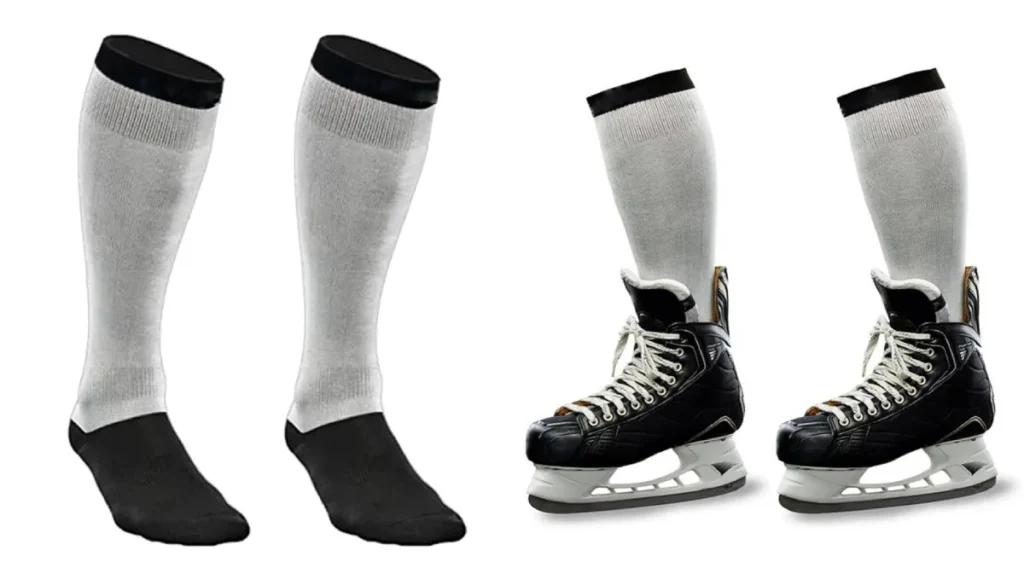
Hockey is a high-intensity sport that requires gear that not only protects but also enhances player performance. When it comes to hockey socks, the right design can make a significant difference in comfort, protection, and agility. For brands in the athletic apparel sector, understanding the intricate needs of hockey socks is key. This guide explores the types, materials, construction, sizing, and customization options that can make your hockey socks stand out. At Max Hosiery, we specialize in crafting custom performance socks, and our expertise can help you deliver top-quality hockey socks tailored to every player’s needs.
What Are The Main Types Of Hockey Socks Available?
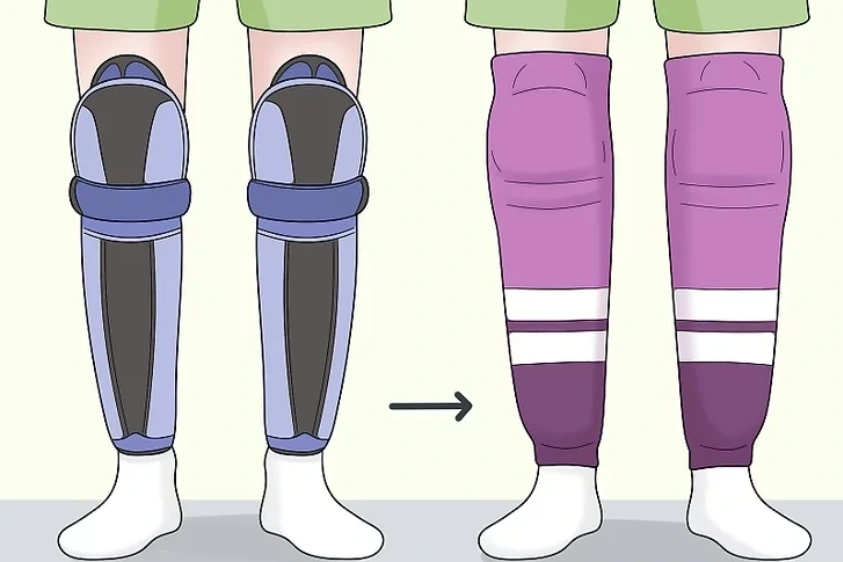
There are two main types of hockey socks: Traditional Knit and Performance (Mesh). Each has distinct advantages for different types of players.
Traditional Knit Hockey Socks
- Material: Typically made from blends of polyester, cotton, or acrylic, these socks offer a thicker, relaxed fit and are more budget-friendly.
- Fit: They have a looser fit with elastic cuffs that stretch easily over shin guards.
- Durability: While affordable, knit socks are more prone to rips and holes during intense gameplay.
- Best For: Youth teams and recreational players.
Performance (Mesh) Hockey Socks
- Material: Made from advanced, moisture-wicking synthetics and mesh for breathability.
- Fit: These socks provide a snug fit that enhances mobility and comfort.
- Performance Features: Includes seamless toes, reinforced heel padding, and moisture-wicking properties to keep feet dry and comfortable.
- Best For: Competitive athletes looking for enhanced performance.
Offering both traditional and performance socks allows your brand to cater to a diverse customer base.
Performance Hockey Socks vs. Traditional Socks: Which Is Better?
Performance hockey socks offer numerous advantages:
- Enhanced Comfort: Lightweight, breathable materials help keep feet cool and dry.
- Snug Fit: Reduces bulk inside the skate, improving agility.
- Moisture-Wicking: Keeps feet dry and prevents discomfort.
- Durability: Despite being thinner, they last longer than traditional socks.
Why Is Material Choice Critical For Hockey Socks?
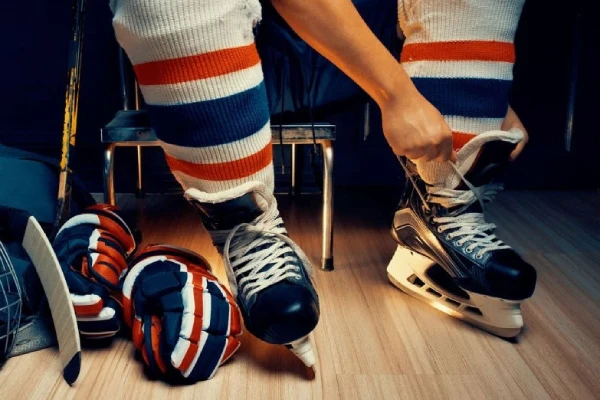
The materials you choose affect comfort, performance, and protection.
- Moisture Management for Blister Prevention
Materials like polyester blends and nylon wick moisture away, keeping feet dry and preventing blisters. Cotton, on the other hand, absorbs moisture, leading to discomfort. - Heat and Airflow Balance
Breathable materials, like mesh panels, release heat and reduce fatigue, ensuring players remain comfortable throughout the game. - Durability Under Pressure
Skates, shin guards, and ice friction cause wear and tear. Reinforced polyester and nylon resist abrasion, ensuring your socks last longer. - Flexible, Secure Fit
Materials with added spandex or elastane provide a secure fit, preventing socks from slipping while allowing full mobility.
How Does Sock Construction Impact A Hockey Player’s Performance?
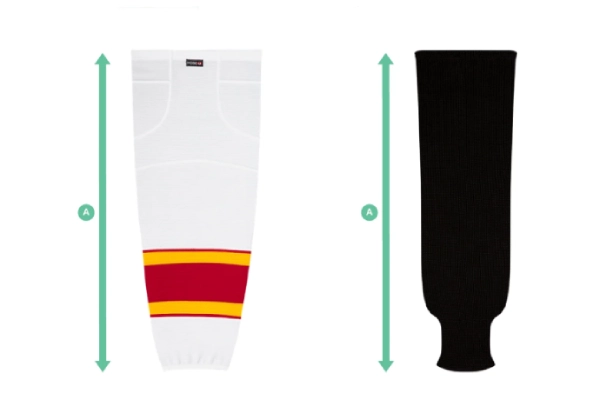
The construction of hockey socks directly affects comfort, protection, and mobility.
- Knit Styles and Fit
Traditional socks use loose-knit designs, which tend to be bulky. In contrast, performance mesh socks offer a thinner, closer fit, improving foot-to-skate connection and allowing for better control. - Seamless Toes and Targeted Support
Seamless construction prevents friction that can lead to blisters. Additionally, integrated arch support reduces foot fatigue during high-intensity movements, boosting performance on long shifts. - Protection and Stability
Targeted reinforced padding at high-impact zones (heel, ball of the foot) provides additional comfort and protection. Velcro tabs help secure the sock, ensuring shin guards stay in place during play.
What Are The Sizing Considerations For Hockey Socks?
Proper sizing is essential to ensure comfort, protection, and performance. Here’s a breakdown:
| Player Height | Sock Length (Approx.) | Recommended Size |
|---|---|---|
| Under 4’6″ | 16–18 inches (41–46 cm) | Youth Small |
| 4’6″ to 5’2″ | 18–20 inches (46–51 cm) | Youth Medium |
| 5’2″ to 5’8″ | 20–22 inches (51–56 cm) | Adult Small/Medium |
| 5’8″ to 6’0″ | 22–24 inches (56–61 cm) | Adult Large |
| Over 6’0″ | 24+ inches (61+ cm) | Adult X-Large |
Why precise sizing matters:
- Shin Guard Coverage: Proper length ensures full shin guard coverage for optimal protection.
- Comfort: A well-fitted sock prevents slipping and reduces irritation, improving blood circulation.
- Performance: A good fit enhances mobility, allowing for better control on the ice.
How Do Hockey Socks Protect Players’ Feet and Legs?
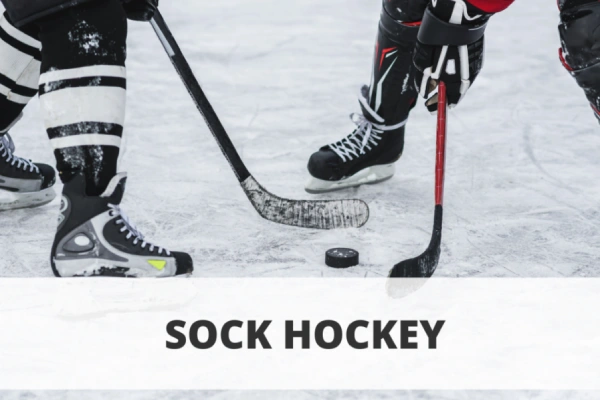
Hockey socks play an essential role in protecting players from injury.
- Stabilizing Shin Guards
A snug fit ensures that shin guards stay in place during aggressive movements, providing complete protection from hits. - Cushioning and Impact Absorption
While not a substitute for hard gear, socks with reinforced zones offer extra cushioning, reducing bruising and soreness. - Friction-Related Injury Prevention
Seamless toes and moisture-wicking fibers minimize irritation and prevent chafing, allowing players to stay comfortable in their skates.
Why Moisture Management Is Essential in Hockey Socks
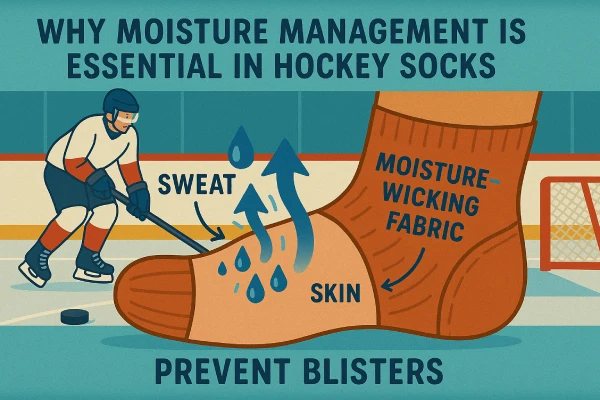
Moisture control is vital for preventing discomfort, blisters, and odor.
- Blister Defense Starts with Dry Feet
Moisture-wicking socks keep feet dry and reduce friction, preventing blisters during play. Polypropylene and treated polyester are excellent choices for moisture management. - Performance Relies on Comfort and Fit
Dry feet maintain a snug fit inside skates, improving balance and reaction time. - Odor and Heat Control
Breathable socks prevent bacterial growth, reducing foot odor. They also help regulate temperature to avoid overheating in insulated skates.
How Do Hockey Socks Contribute To Team Uniforms And Branding?
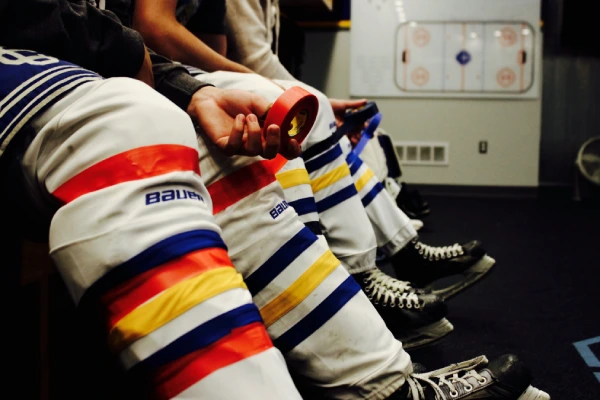
Beyond their functional attributes, hockey socks serve as a crucial element of a team’s identity, directly contributing to the visual coherence of the uniform and providing significant branding opportunities. For brands, understanding this dual role—functional gear and a canvas for identity—is key to developing a product that appeals to both players and team organizations. Hockey socks are not just worn; they are seen, representing unity and pride.
Hockey socks as a branding and uniform tool:
- Essential Part of Team Uniforms: Hockey socks are explicitly listed as an essential component of a team’s uniform. They ensure a consistent look from head to toe, reinforcing team cohesion and professionalism on the ice.
- Color Matching and Identity: Teams utilize socks to match their specific team colors, creating a recognizable and unified appearance. This helps distinguish players on the ice and builds a strong visual identity for the organization.
- Branding Opportunities: Hockey socks offer a valuable surface for branding. This can include:
- Team Logos: Small, subtle logos can be integrated into the design.
- Sponsor Logos: For competitive teams, socks can carry sponsor branding, providing additional visibility.
- Player Numbers: For some leagues, player numbers are incorporated into the sock design for easy identification.
- Sublimated Designs: Performance (mesh) hockey socks are often used in sublimated designs, allowing for complex patterns, vibrant colors, and seamless integration of logos directly into the fabric. This technique provides a clean, professional look.
What Are The Durability Expectations For Hockey Socks?
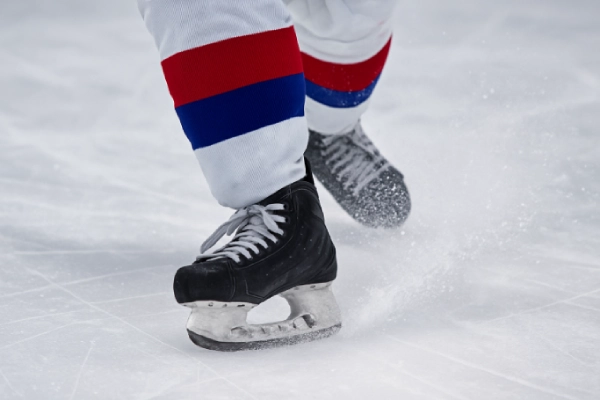
Hockey socks need to withstand extreme wear and tear. For brands, offering durable socks that last through intense use is crucial.
High-Abrasion Resistance
Polyester and nylon are highly resistant to abrasions from skates, shin guards, and ice, ensuring the socks hold up under pressure.
Wash and Wear Resistance
Durable socks retain their shape and elasticity after repeated washing, offering lasting performance.
Durability Features
Robust stitching: Ensures the socks stay intact during intense use. The game not only satisfies customers but also builds a reputation for reliability and quality that fosters long-term loyalty within the demanding hockey community.
Reinforced heel and toe: Prevents early wear.
FAQs
What are the different types of hockey socks?
Hockey socks primarily come in two types: traditional knit and performance (mesh). Traditional knit socks are thicker and often more affordable, suitable for recreational players. Performance socks are lighter, breathable, and designed for competitive play, offering features like moisture-wicking and seamless construction.
How do I choose the right size for hockey socks?
Selecting the correct size ensures comfort and proper fit. Measure the length from the top of your skate boot to just below the knee. Refer to sizing charts provided by manufacturers, which typically categorize sizes into youth, intermediate, and adult ranges, adjusting for height and leg circumference.
Why are moisture-wicking materials important in hockey socks?
Moisture-wicking materials, such as polyester blends, draw sweat away from the skin, keeping feet dry. This reduces the risk of blisters and enhances comfort during intense physical activity.
Can I customize hockey socks with team logos or colors?
Yes, many manufacturers offer customization options, allowing teams to add logos, select colors, and even include player numbers. This helps in team identification and boosts team spirit.
How do hockey socks contribute to player performance?
Properly designed hockey socks provide compression, reduce muscle fatigue, and ensure shin guards stay securely in place. Features like arch support and cushioning can also enhance comfort and agility on the ice.
Conclusion: Elevating The Game With Superior Hockey Socks
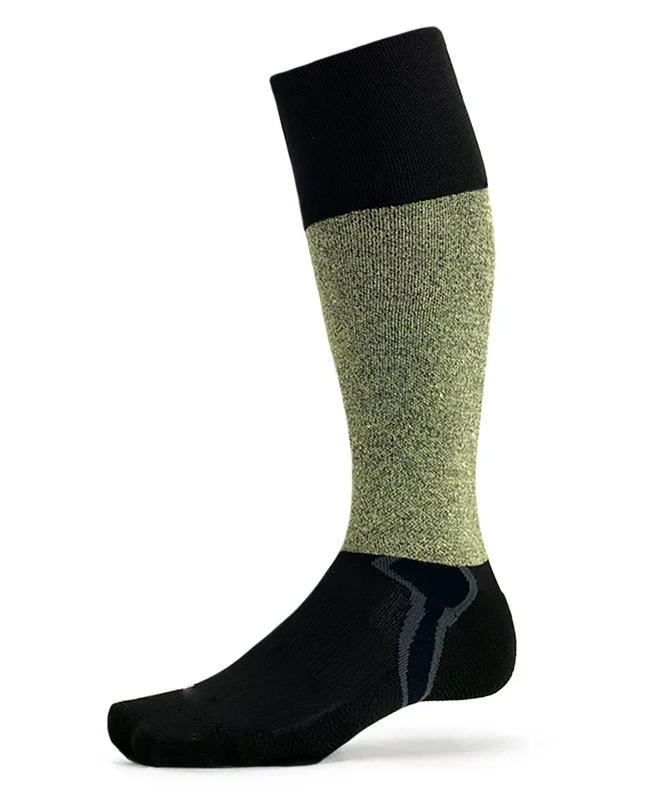
Hockey socks go beyond basic protection. They impact a player’s comfort, performance, and safety. From material choice to construction and customization, each factor plays a crucial role in designing socks that enhance the game.
At Max Hosiery, we specialize in producing high-performance custom hockey socks. We are committed to delivering socks that provide comfort, protection, and brand identity. Contact us today to design the perfect hockey socks for your team.
